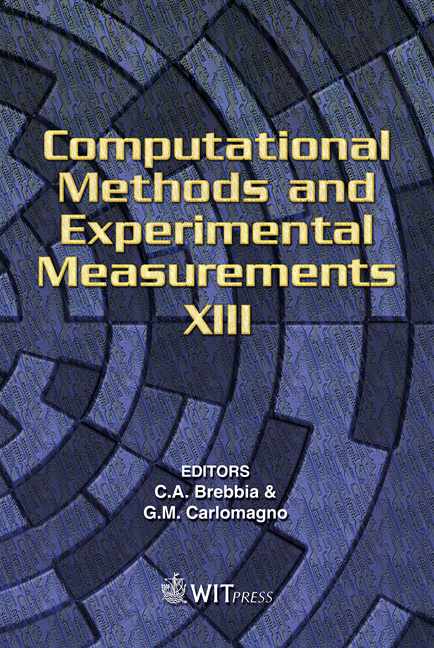On The Relation Between Geometric And Flow Properties Of A Miniaturized Fluid Oscillator
Price
Free (open access)
Transaction
Volume
46
Pages
10
Published
2007
Size
733 kb
Paper DOI
10.2495/CMEM070311
Copyright
WIT Press
Author(s)
J. O. Sotero-Esteva, R. Furlan & J. J. Santiago-Avilés
Abstract
A miniaturized fluid oscillator with no movable parts composed by a switching cavity, one inlet, two outlets and two feedback channels was studied. Examples of these devices have been built before and had shown oscillation of fluid flows ranging from tens of Hz for liquids to thousand of Hz for gases. The present work consists of a study of the flow within the device by means of a computer model. The computer model was built using COMSOL 3.3. It uses conventional Navier-Stokes equations numerically solved by Finite Element Methods. A new level of detail of the qualitative description of the flow within the device is achieved which allows for a better understanding of why some geometries produce better devices than others. It shows that homogeneous oscillation, not only depend on the direct force exerted by the feedback flow on the inlet stream, but also on the disruption of the Coanda's effect that diverts the stream towards one of the output channels. On the other hand, the quantitative part of the study serves to validate the simulation as well as a basis for proposing new empirical models. The quantitative measurements are consistent with a previously known mathematical model that describes the relation between frequency, input velocity and geometrical and physical properties. Ongoing testing with actual devices also supports the proposed operating mechanisms and models. Keywords: fluidic, flow control, flow meter, fluidic oscillator, finite element method, computer simulation.
Keywords
fluidic, flow control, flow meter, fluidic oscillator, finite element method, computer simulation.





